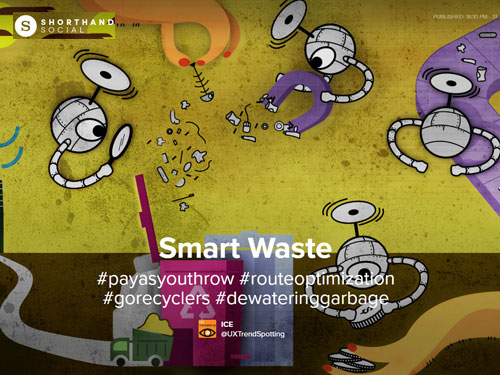
Could the future be about paying for the garbage you generate? Can we bring our waste generation down to zero? Here are some recent trends in waste collection and management that indicate the directions of the future of waste.

Six Notes for Smart City Futures Note 1: CONNECTIVITY
This report looks at the disruptive potential of automated vehicles: their impact on commuters, car companies, vehicle design and urban planning. It warns of the potential dangers of their unbridled proliferation and prerequisites to their effective deployment.
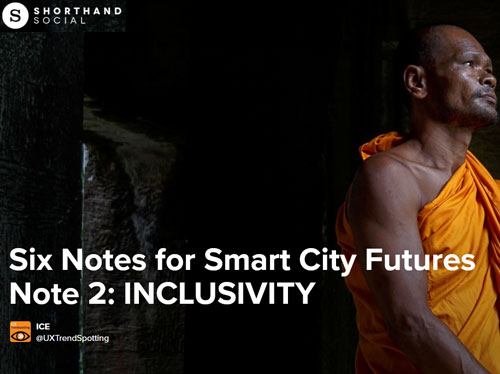
Six Notes for Smart City Futures Note 2: INCLUSIVITY
This report looks at the disruptive potential of automated vehicles: their impact on commuters, car companies, vehicle design and urban planning. It warns of the potential dangers of their unbridled proliferation and prerequisites to their effective deployment.
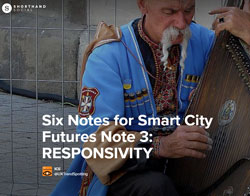
Six Notes for Smart City Futures Note 3: RESPONSIVITY
By “Responsivity” we mean that a city's public infrastructure will be in constant touch with the needs of its denizens. What that means, or how a city will aim to know its residents must change in tune with the 21st century, for “structures that produced progressive government in 1890 ensure regressive results [now].”

Six Notes for Smart City Futures Note 4: HERITAGE
How does the Smart City attend to its cultural heritage? There is often a perceived tension between technology and culture, more prominent in conservative societies, a cultural sense of technology as somehow antithetical to our cultural traditions and ways of doing things.

Six Notes for Smart City Futures Note 5: MOBILITY
Conversations about smart cities invariably focus on data as the new blood that runs through a city's veins. While this may be metaphorically accurate, it is the movement of people and goods that remain the among the smart city’s most crucial needs.

Six Notes for Smart City Futures Note 6: SUSTAINABILITY
Although "sustainability" is a term used to qualify many urban, economic, development, and social priorities, we use it here to hone in on one that is crucial to our future in the Anthropocene: environmental sustainability.
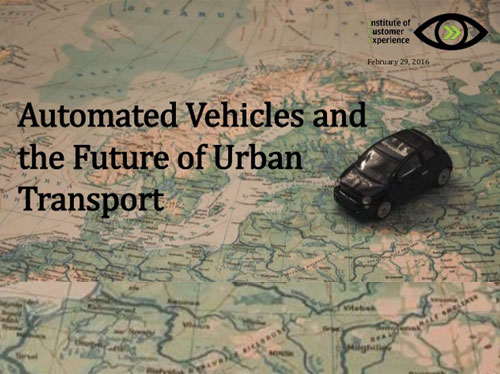
Automated vehicles and transport systems
This report looks at the disruptive potential of automated vehicles: their impact on commuters, car companies, vehicle design and urban planning. It warns of the potential dangers of their unbridled proliferation and prerequisites to their effective deployment.

Sustainable Lifestyles: Stories of Trendsetters from Around the World
Is our current materialistic lifestyle sustainable for our planet? How long can we continue to do things that make us feel good, but that are harmful and not sustainable for our environment? We need to start seeing our interests and nature’s interest as one and the same.
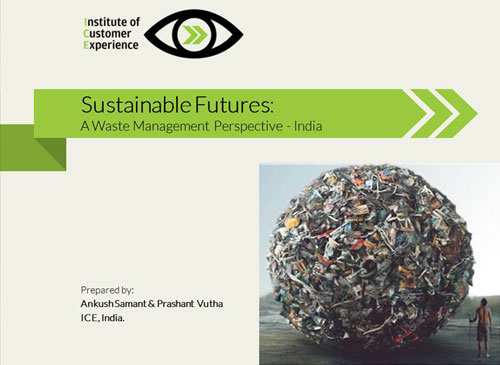
Sustainable Futures: A Waste Management Perspective – India
Waste management is an important part of any sustainable future. In this report we present our views on Sustainable Futures for India from a waste management perspective.

Greening Cities - A Report on Trends in Urban Sustainability, 2013
“By mid-century, we’re going to have about eight billion – perhaps more – people living in cities or within a day’s travel of one. We will be an overwhelmingly urban species.” – Futurist, Alex Steffen
The future is densely populated. Thus, the future is overwhelmingly urban. Does this mean the future belongs to inevitable concrete, crowds, and pollution? Fortunately, futurists, architects, urban planners, and designers are collaborating with industry, governments, and the public to build new cities that promise to be sustainable and green.
Our report on Greening Cities covers trends related to this new kind of urbanization.


